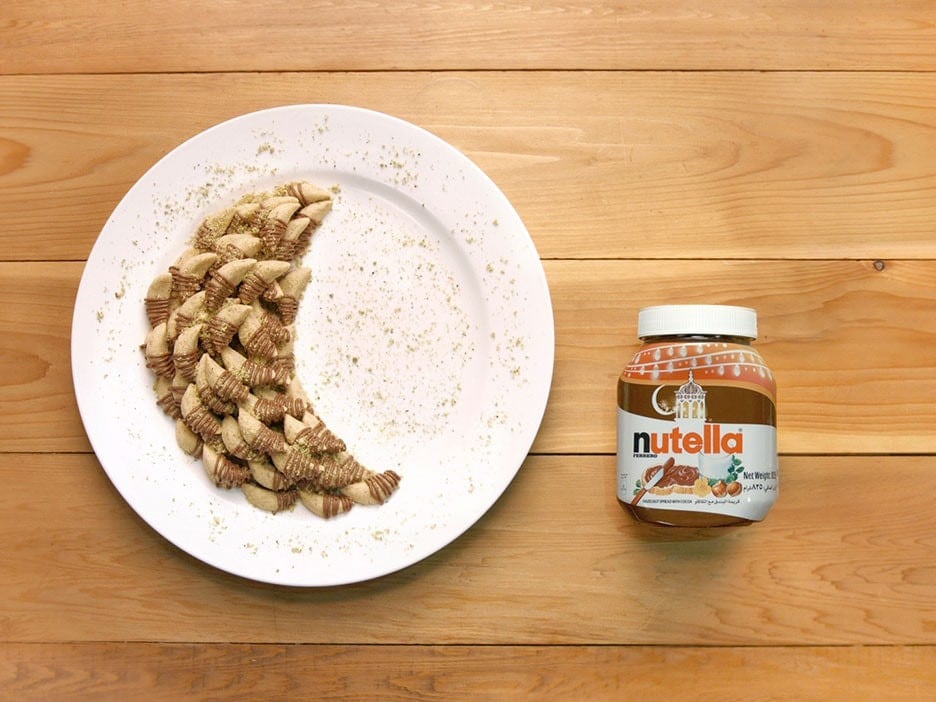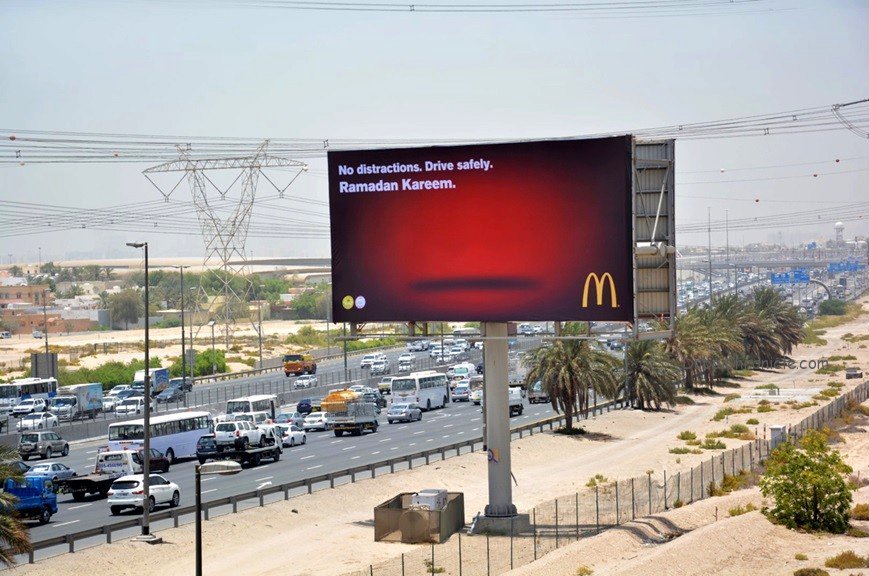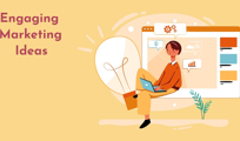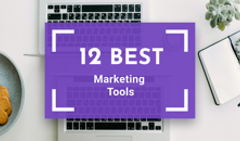Ramadan is undoubtedly the most important month in the life of the Muslim community, with over 1.6 billion people observing it worldwide. People focus on spiritual growth, being grateful and generous, and spending quality time with their families.
Consumers’ behavior might change during this time, but it doesn’t mean that people stop buying or that brands stop promoting their products—which is why it’s important to stay aware and respectful, and develop a Ramadan marketing strategy that will help strengthen the relationship between your company and audience.
In this article, we will explain what Ramadan is, what month it occurs, how it is celebrated and what are the best Ramadan marketing practices to try.
What Is Ramadan
In the Islamic lunar calendar, the month of Ramadan commemorates the month when the Quran, the holy book of Islam, was revealed to the Prophet Muhammad. It is the most important time for Muslims, marked by fasting, prayer, gratitude, and giving back to the community.
During Ramadan, from dawn until sunset, Muslims observe a strict fast, abstaining from eating, drinking, or smoking, and use this time for self-reflection and fostering the feeling of empathy toward others. After sunset, the fast is broken with a meal known as Iftar which is often shared with family and friends in a communal spirit of generosity and gratitude.
The end of the holy month is celebrated with the festival of Eid al-Fitr. It starts with a special prayer followed by social gatherings, feasting, and gift-giving.
Charity also holds a special place in Ramadan’s traditions. Muslims are encouraged to share their wealth with the less fortunate through Zakat (acts of charity) and community service.
When Is Ramadan 2026?
The beginning of Ramadan is based on the sighting of the first crescent Moon on the last night of the eighth month. In 2026, it will occur on the evening of Tuesday, February 17. Ramadan will end on Thursday, March 19, with the celebration of Eid al-Fitr.
How Consumer Behavior Changes During Ramadan
As we’ve already stated, life doesn’t stop during the holy month. However, there’s a distinct shift in topics people are interested in and their buying habits throughout Ramadan that can be divided into 4 distinct stages.
Pre-Ramadan: preparation and anticipation
While preparing for Ramadan, people take a deeper interest in spirituality and look for inspiration. This is reflected in prayer and religious content peaking in the search queries. There’s also expectation of festivities, with a surge in searches for festive decor, themed recipes, and modest fashion.
Possible marketing strategy:
- Raise brand awareness through tailored ads and promotions, using religious content and symbols, and lifestyle tips.
The first half of Ramadan: mindfulness and fasting
Social media and online video consumption are all on the rise at this time, as people who observe fast and prefer activities that don’t require a lot of energy spend about 30 to 40% of their time online. Religious content and apps as well as cooking continue to interest people.

Source: Think with Google
Possible marketing strategy:
- Connect with your audience through positive, uplifting content that fosters a sense of community and encourages giving back.
- Leverage social media channels and video content to have the best chance of reaching your target audience.
The second half of Ramadan: preparing for Eid festivities
During these last weeks, people mostly look for gifts for their loved ones and make purchase decisions, with increased searches for discounts and special offers. People also play thematic games and interact on social media more, sharing greetings and good wishes.
Possible marketing strategy:
- Share gift guides and gift ideas to help people decide on buying the presents.
- Run discount-based email and social media campaigns—driven by the sense of urgency, people will take a greater interest in time-limited offers.
Eid: spending time with family and celebrating
People gather together with family and friends for a shared feast and exchange gifts, and then slowly prepare to come back to ordinary life, work and study.
Possible marketing strategy:
- Interactive activities on social media will be most appreciated. For example, you can encourage people to share their Ramadan and Eid special moments—user-generated content feels authentic and nurtures trust.
- Send out Ramadan greetings and good wishes to keep your brand top of mind.
How to Wish Someone a Happy Ramadan?
Traditional Ramadan greetings are Ramadan Mubarak, which in Arabic translates to "Blessed Ramadan", and Ramadan Kareem, which means "[Have a] Generous Ramadan."
However, you can always exchange greetings in a less formal and more heartfelt way. For example, you can say "Wishing you a peaceful and blessed Ramadan" or "May this Ramadan bring joy, health, and prosperity to you and your loved ones."
Ramadan Marketing Trends 2026
Marketing during Ramadan can be tricky because of the sensitivity of the topic and the need to respect the meaning behind this important cultural tradition. That said, it doesn't have to be boring or stopped completely.
Ramadan marketing is following global trends, with short-form videos, personalization, and authenticity becoming increasingly important for engaging users.
📹 Short-form video
Whether people look for entertaining or educational content, they prefer to consume it in the form of short TikToks and Instagram reels. During Ramadan, go for positive, heartwarming, and authentic stories. For example, you can share real-life anecdotes and tips to evoke a sense of resonance in your audience.
🎯 Personalization
The more personal and fine-tuned your campaigns are, the greater the impact they will produce. On the surface level, you can at least tailor messages for different audiences such as families, young adults, or expats. However, AI has made it possible to create hyper-personalized campaigns that get maximum engagement. For example, using data analysis and predictive technologies, AI can help you create campaigns incorporating a customer’s name or location, and suggest relevant or complementary products based on their previous purchase history and website behavior.
📱 Mobile-first design
Scrolling through social media, Googling, watching videos, texting, or playing games—all that people do on their phones. During Ramadan, people spend even more time on their mobile devices, so that’s your cue to design all mobile-first marketing campaigns.
🙋🏽♂️ Interactivity
Contests, quizzes, and challenges focused on Ramadan traditions, favorite foods, or experiences are a great way to interact with your audience in a meaningful way. Interactive experiences go in line with the ‘authenticity’ trend and help build connections—just remember to stay culturally aware and respectful.
Ramadan Marketing Campaign Ideas and Examples
Taking into account the trends that we’ve just looked at, here are some creative ideas for a successful Ramadan marketing campaign:
#1 Create educational content on lifestyle and health
Fasting is an extremely important and physically demanding Ramadan practice, so it’s no wonder that people take a great interest in cooking and health during the holy month. Iftar (breaking fast) is an important tradition as well, and while many people prefer to prepare this meal at home, restaurants serve it, too. If your business operates in hospitality or catering, sharing thematic recipe collections and menus is a fantastic promotional opportunity.
But even if it’s not the case, sharing tips on how to stay healthy and active, or posting recipes of easy-to-cook and nourishing dishes is a good way to remind people about your brand.
Goody Kitchen, a website for people sharing their passion for cooking, welcomed Ramadan with an amazing interactive magazine, full of useful recipes and readers’ stories:
Goody Kitchen Ramadan Magazine 2023
By the way, if you create brochures, modest fashion catalogs, or magazines this Ramadan, you can make them interactive, too. FlippingBook turns your PDF materials into digital flipbooks you can enhance with videos, links, and GIFs, and supports right-to-left as well as left-to-right scripts. Interactive documents such as this are extremely engaging—you’ll see for yourself with document tracking.
#2 Organize or support a community initiative
Charity is another crucial part of Ramadan, and you can support your audience’s values by encouraging your clients to contribute to a good cause as volunteers or through donations. If you don’t have the resources to organize the initiative yourself, you can always collaborate with a local non-profit organization.
Pizza2Go together with Emirates Red Crescent implemented an environmental initiative into their 2021 Ramadan campaign.
Studies showed that roughly 25% of food during Iftars usually went to waste in the Middle East. So the company launched a ¾ pizza variation. Not only did it prevent food wastage, but also served a greater cause, as the company donated 25% of the pizza price to Emirates Red Crescent, supporting people in need.

Source: Campaign Middle East
#3 Use Ramadan visuals
If you’re offering physical goods, consider incorporating Ramadan symbols into the packaging. In digital marketing, you can use traditional Ramadan visuals in your content and ads to attract attention and show customers you care.
Here’s a beautiful example by Nutella which did both: placed a crescent Moon, a recognizable symbol of Ramadan with a deep cultural meaning, on the jars and included it in a photo, promoting a traditional dessert.

Source: Nutella
Other popular Ramadan symbols include:
- Lanterns (Fanous): Traditionally, lanterns were used to light the streets during the nights of Ramadan, and today, they are used for decoration, representing hope, joy, and the light of faith.
- Dates: Eating dates is the first thing Muslims do when breaking the fast at Iftar, the meal after sunset, as they are a quick source of energy and nutrients.
- Mosques: Mosques symbolize community and collective worship, especially during Ramadan.
- Water: Water is a symbol of purification and is essential for breaking the fast, emphasizing life and rejuvenation.
#4 Show how your product can add value to Ramadan experiences
Don’t just bombard your clients with promotions and deals (though they do help), show them how your products or services can enhance their observation.
Check out Aramex’s touching video ad that shows how their delivery helps families stay connected during Ramadan. It evokes a powerful emotional response and boasts an impressive 1.5 million views on YouTube.
Or—stay culturally aware and adjust your messaging to demonstrate to your customers that you understand the significance of the holy month.
In 2021, Mcdonald's removed all the images of burgers and fries from its billboards in UAE acknowledging people’s fasting.

Source: aiden creative
The campaign was a great success, with 1 million shares on social media and a 15% increase in sales for McDonald’s during Ramadan.
#5 Engage your audience on social media
We’ve spoken a lot about the importance of interacting with your audience and engaging them on social media. But let’s reiterate: social media consumption increases during Ramadan, so it’s the best time to connect with your clients through positive activities: quizzes, contests, or giveaways.
Skytree has come up with a great selection of different activities you can try. Here are a few select ones:
- Ramadan Recipe Challenge: Let clients share their favorite Iftar recipes using your hashtag.
- Ramadan Reading Challenge: Encourage your audience to read during the month of Ramadan by sharing their results on social media.
- Ramadan DIY Crafts: Host a craft event, where people can create their own decorations or gifts.
- Ramadan Q&A: Host a Q&A session, where the audience can ask questions and learn more about the customs and traditions of Ramadan.
Final Thoughts
Ramadan is a great opportunity to connect with your Muslim audience, but in order for your campaigns to perform well, you need to understand the meaning and cultural nuances behind Ramadan traditions and be respectful of them.




